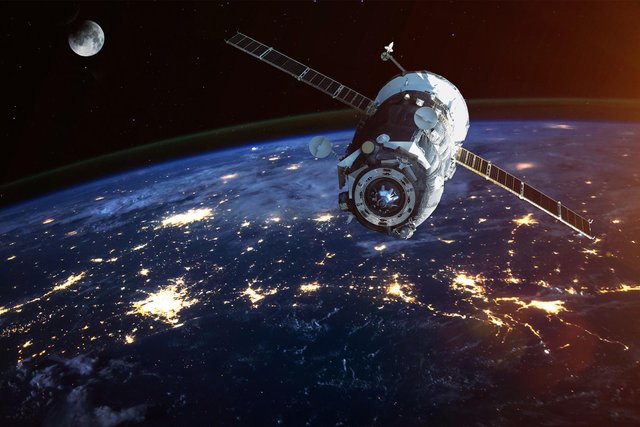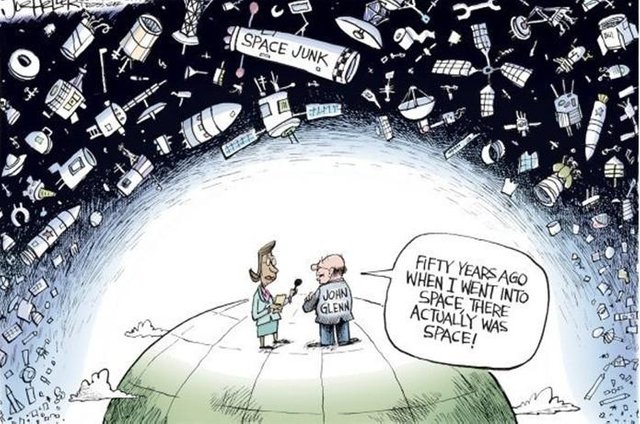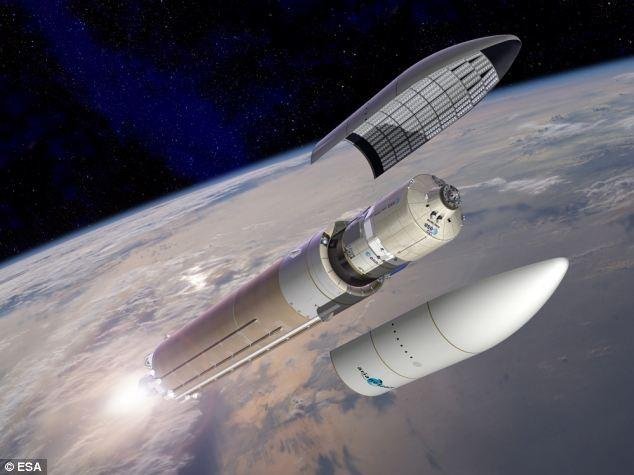
We are all aware that there are multiple satellites that have been sent to space over the last few decades. However, the one thing that we don’t think about is where do these satellites go once they become obsolete. We know that the pieces of small satellites will burn up in the atmosphere when they come down. However, the pieces of larger satellites will eventually reach the earth’s surface. Before the control to the satellite is lost, they can be brought down to earth safely without it hurting anyone. However, if control with a satellite is lost, it is very difficult to control when and where the satellite will land when it finally comes down to earth.
The problem is with larger objects like Tiangong-1, which was the first Chinese space station launched in September 2011 and which weighs about 8.5 tonnes. China lost control of the 12-metre-long orbital laboratory in March 2016, and it is now doomed to crash on earth by early 2018. The issue is that no one knows where it will crash. Bill Ailor, an aerospace engineer says that one would not be able to generate a forecast until five days before the space station is expected to come and crash down on earth. However, when it does crash, hundreds of pounds of the spacecraft, which comprises of titanium scaffolding and glass-fibre-wrapped fuel tanks, could be falling at more than 180 miles per hour before slamming into the ground. Since China doesn’t have control of Tiangong-1, it can’t assure that the space station will disintegrate in a safe place.

A few places have been identified where spacecraft and satellite debris can be disposed of safely. These places are called Poles of Inaccessibility. One of them is called the Continental pole of inaccessibility, which is furthest from the ocean. The exact location is not known but is somewhere close to the Dzungarian Gate, which is a mountain pass between China and Central Asia.
There is another place which is far away from land and it lies in the Pacific Ocean, around 2,700 km south of Pitcairn Island. This is in a no man’s land, or rather no man’s ocean, between Australia, New Zealand and South America. This is scattered over an area of 1500 sq. km and is considered as a graveyard of satellites. When it was last counted, there were around 260 satellites that had come down in this region. This dumping has been taking place since 1971. This place is also called Point Nemo. NASA has said that this place is the farthest place from any human civilisation. Astronauts living aboard the International Space Station actually live closer to the graveyard of satellites than anyone else. This is because the International Space Station orbits about 360 km above Earth and Point Nemo when the orbital laboratory flies overhead. The nearest island, Pitcairn Island, is much farther away (2700 km).
According to the website Smithsonian.com, there are more than 140 Russian resupply vehicles, European Space Agency’s cargo ships, the MIR space station, and even Elon Musk’s SpaceX rocket that are buried under more than 2 miles of water. These dead spacecraft aren’t neatly tucked together. A large object like Tiangong-1 can break apart into an oval-shaped footprint of debris that extends 1600 km (995 miles) long and dozens of miles wide. The land-free zone around Point Nemo stretches for more than 17 million square km. While not all spacecraft wind up in the cemetery, the chances are extremely slim that anyone would get hit by debris regardless of where the spacecraft breaks up over Earth. It’s not impossible, but since the beginning of the space age, a woman who was brushed on the shoulder in Oklahoma is the only one we’re aware of who’s been touched by a piece of space debris. A bigger risk is leaving dead spacecraft in orbit.

There are around 4,000 satellites currently orbiting Earth at various altitudes. There’s space for much more. Elon Musk and SpaceX plan to launch 4,425 internet-providing satellites in the near future. However, it is getting crowded up there, when considering the threat of space junk. According to the website Space-Track.org, in addition to all these satellites, there are still thousands of uncontrolled rocket bodies orbiting the earth, along with more than 12,000 artificial objects larger than a human fist. This is excluding all the countless screws, bolts, flecks of paint, and bits of metal.
The worst kind of risk is when a piece of space junk accidentally hits another piece, especially if the objects are large. Such satellite collisions are rare but they do happen. One such collision occurred in 1996, another in 2009, and two in 2013. These accidents, along with the intentional destruction of space satellites have generated countless pieces of space debris that can threaten satellites in nearby orbits years later, leading to a kind of runaway effect. This debris can stay up there for hundreds of years. Getting old spacecraft out of orbit is the key to preventing the formation of space junk, and many space agencies and corporations now build spacecraft with systems to de-orbit them and land them in the spacecraft cemetery. Elon Musk’s SpaceX is working on rockets that, once launched, can come back and land on Earth. This proves to be more economical and it also reduces the amount of space junk.
There are people who are pushing for the development of new technologies and methods that can remove the old, uncontrolled junk that’s already in space. However, the most important hurdle to clear may be the politics on Earth. It’s not just a technical issue. The idea of ownership comes into the picture. No nation has the permission to touch another nation’s satellite and if such a thing were to happen, it may be labelled as an act of war. We are right now comfortable with the fact that there are poles of inaccessibility which are huge in size, but the problem of space junk is real and something needs to be done about this soon.
I found similar content on https://qrius.com/spacecraft-debris-go/
Downvoting a post can decrease pending rewards and make it less visible. Common reasons:
Submit